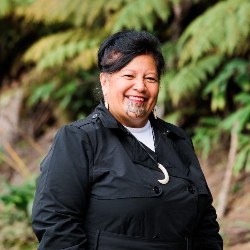2020 Ratepayers' Report League Tables Now Available
The New Zealand Taxpayers' Union, in partnership with the Auckland Ratepayers’ Alliance, has today published the 2020 edition of Ratepayers' Report – online local government league tables – at www.ratepayersreport.nz.
With these league tables, New Zealanders can easily compare their local council’s performance and financial position for 2018/19 against others.
Setting out more than two thousand data points, the Ratepayers' Report provides transparency for ratepayers, and rates figures are presented on a per-household basis to ensure fair comparisons between councils. The league tables rank councils on metrics including average residential rates, staffing costs, and council liabilities among others.
Taxpayers’ Union Campaign Manager Louis Houlbrooke says, “Every dollar spent by a local council was earned by a hard-working ratepayer. Ratepayers' Report allows ratepayers to understand if they could be getting a better deal. The league tables reveal huge disparities between councils in terms of how much they take in rates, how much they owe in liabilities, and how much they spend on salaries. The league tables suggest there is major scope for councils to find efficiencies to reduce the burden on ratepayers.”
Notable Findings:
- Carterton District Council now ranks highest for average residential rates at $3,472, just pipping Auckland Council at $3,469.
- The lowest average residential rates in New Zealand are levied by the Central Otago District Council at $1,444.
- Christchurch City Council continues to have the highest liabilities per household compared to any other council ($27,510) – up from last year. Auckland Council follows in second place, with liabilities per household of $25,372 – another significant increase from last year.
- The average liabilities per household of all councils is $6,144.
- There are were 2,831 staff paid salaries greater than $100,000 at Auckland Council and its CCOs.
- The least efficient council in terms of staffing is Waitomo District Council, with a staff member for every 20 households. The most efficient is Thames-Coromandel District Council, with a staff member for every 128 households.
- Only four Councils meet the full criteria for prudent Audit and Risk Committees. Western Bay of Plenty District Council failed to have a separate Audit and Risk Committee while Grey District Council didn’t have one at all, which is considered basic financial prudence.
All figures are based on the 2018/19 financial year, and therefore do not reflect changes in council positions caused by COVID-19 and the ensuing 2020 budgets.
Highest and lowest council rates in New Zealand revealed
Taxpayers’ Union spokesperson Louis Houlbrooke says: “The key attraction of Ratepayers’ Report has always been the league table for average residential rates, which uses a standardised formula to include all residential rates, local taxes, and levies.”
“This year’s table has a new champion of high rates, knocking Auckland Council and Kaipara District Council off the top. Carterton District Council has moved up the rankings from third last year to take out the title of the highest-rating council in 2020, charging $3,472 on average for residential rates.”
“However, our largest city continues to loom large in second place, with Auckland Council charging an average rates bill of $3,469 – only just below Carterton, and well ahead of Christchurch ($2,588).”
“On the other end of the table, Central Otago District Council is now officially the lowest-rating council. Central Otago charges less than half what Carterton and Auckland do.”
“The average residential rate nationwide is $2,445 – an increase of $84 from the previous year. Councils are extracting even more rates, taxes and levies from the average ratepayer, but the range of different rates levels in the league table demonstrates that high rates need not be an inevitability. High-rating councils should take notes on how others are able to run tighter ships.”
Highest average residential rates:
- Carterton District Council: $3,472
- Auckland Council: $3,472
- Tasman District Council: $3,186
- Western Bay of Plenty District Council: $3,168
- South Wairarapa District Council: $3,151
Lowest average residential rates:
- Central Otago District Council: $1,444
- Grey District Council: $1,739
- Mackenzie District Council: $1,884
- Southland District Council: $1,914
- Otorohanga District Council: $1,919
"Three Councils – Kaipara District, Waikato District, and Wellington City – failed to provide the basic data needed to calculate average rates, despite having months to do so. That's not acceptable, especially when they've been able to provide it in the past. Ratepayers are left wondering whether they're simply trying to avoid an embarrassing ranking."


 Gordon Campbell: On bird flu, AUKUS entry fees and Cindy Lee
Gordon Campbell: On bird flu, AUKUS entry fees and Cindy Lee Susan Botting - Local Democracy Reporter: Ruawai Leader Slams Kaipara Council In Battle Over $400k Property
Susan Botting - Local Democracy Reporter: Ruawai Leader Slams Kaipara Council In Battle Over $400k Property Te Pati Maori: Another ‘Stolen Generation’ Enabled By Court Ruling On Waitangi Tribunal Summons
Te Pati Maori: Another ‘Stolen Generation’ Enabled By Court Ruling On Waitangi Tribunal Summons Peace Action Wellington: Die In for Palestine Marks ANZAC day
Peace Action Wellington: Die In for Palestine Marks ANZAC day Labour Party: Penny Drops – But What About Seymour And Peters?
Labour Party: Penny Drops – But What About Seymour And Peters? Government: PM Announces Changes To Portfolios
Government: PM Announces Changes To Portfolios Family First: Just 1 In 6 Oppose ‘Three Strikes’ - Poll
Family First: Just 1 In 6 Oppose ‘Three Strikes’ - Poll


